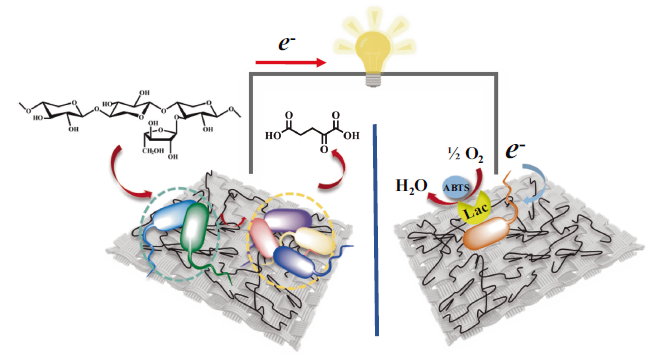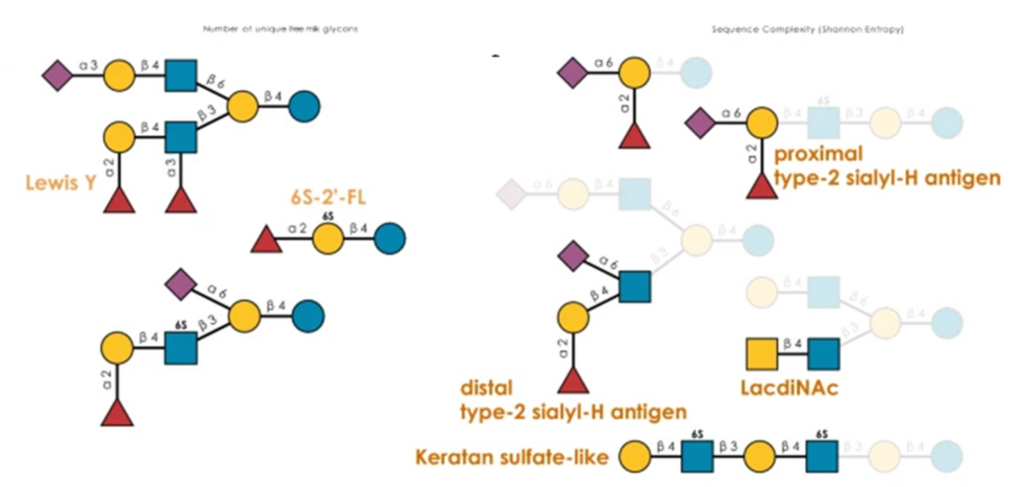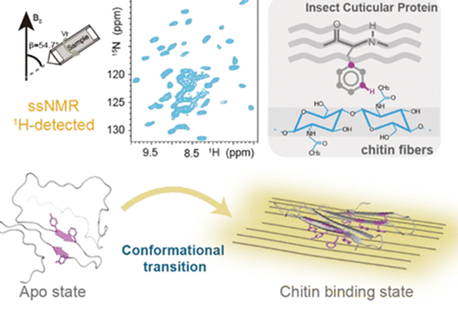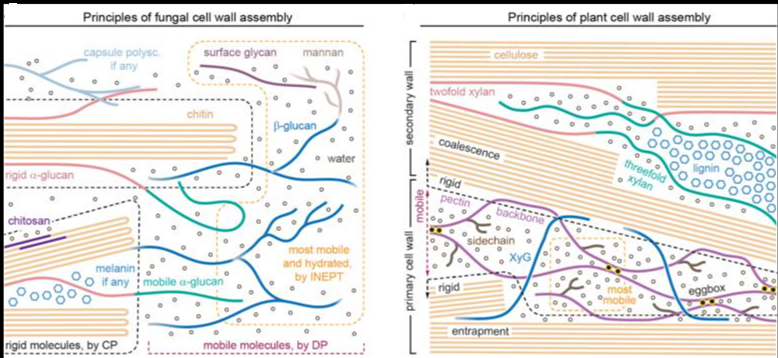As an abundant agricultural and forestry biomass resource, hemicelluloses are hard to effectively degrade and utilize by microorganisms due to the constraints of membrane and metabolic regulations. The authors report a synthetic extracellular metabolic pathway with hemicellulose-degrading enzymes controllably displayed on Escherichia coli surface as engineered bacterial consortia members for efficiently utilising xylan, the most abundant component in hemicellulose. Further, they develop a hemicellulose/O2 microbial fuel cell (MFC) configuring of enzyme-engineered bacterial consortia-based ioanode and bacterial-displayed laccase-based biocathode. The optimized MFC exhibited an open-circuit voltage of 0.71 V and a maximum power density (Pmax) of 174.33±4.56μWcm−2. Meanwhile, 46.6% (w/w) α-ketoglutarate was produced in this hemicellulose fed-MFC. Besides, the MFC retained over 95% of the Pmax during 6 days’ operation. Therefore, this work establishes an effective and sustainable one-pot process for catalyzing renewable biomass into high-value products and electricity in an environmentally-friendly way.





